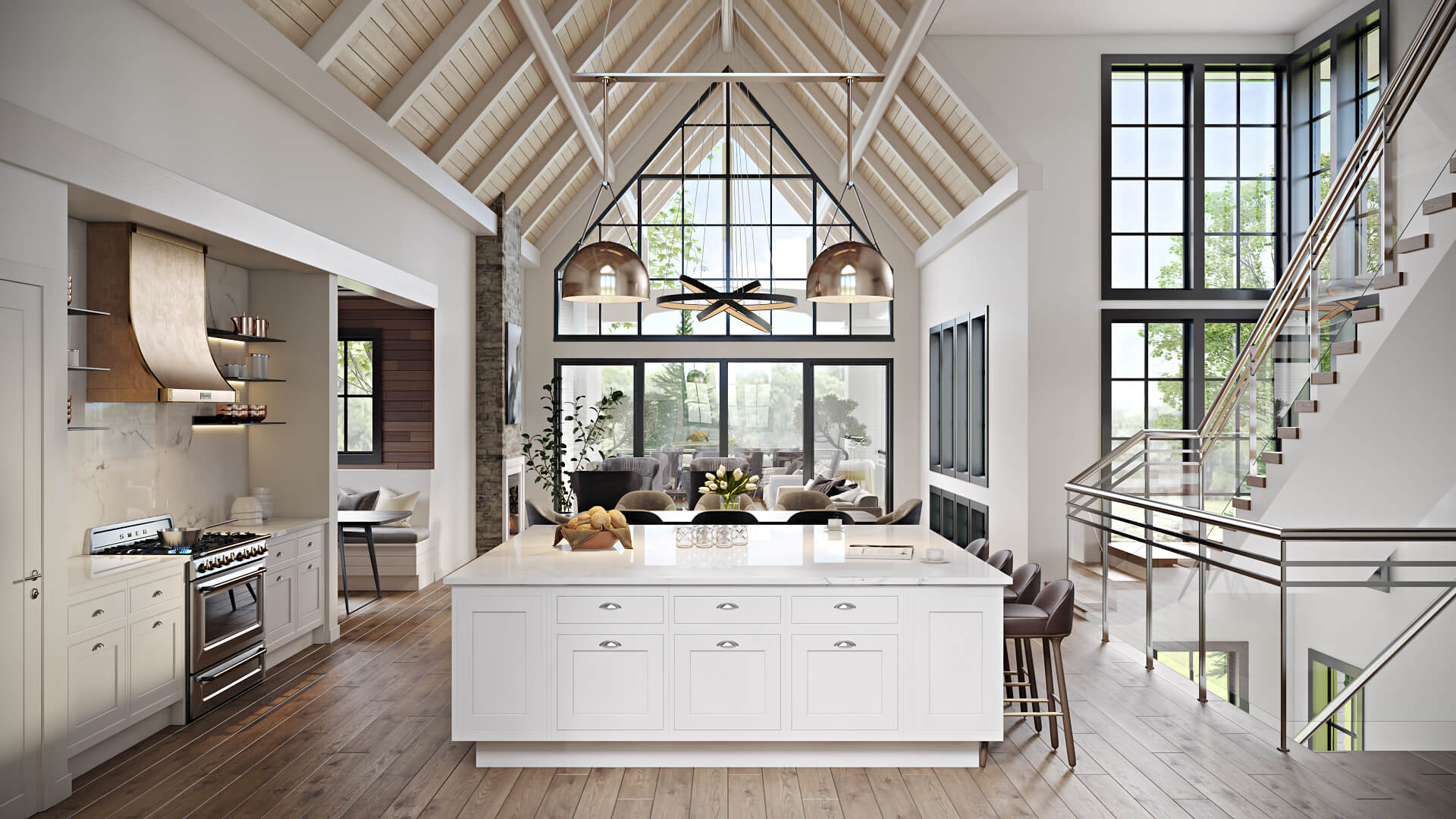Have you ever wanted to see what your home would look like with different types of roofing? Or maybe you’re curious about how adding an extra story would change the look of your house. Architectural 3D rendering can give you a glimpse into what your future home could look like. There are a few different types of results that can be produced, so let’s look at them!
What Is Architectural 3d Rendering?
Architectural 3D rendering is the process of transforming three-dimensional models into high-resolution images. This typically involves using specialized computer software to add texture, lighting, color, and other visual effects that give the final image a life like appearance.
Because this process is highly technical and often relies on precise calculations and algorithms, it is typically carried out by trained professionals with extensive experience in the field. However, thanks to technological advances, there are now many tools available for amateur graphic designers to create their own architectural 3D renderings.
Whether you’re an architect or just someone with a big imagination and an interest in design, 3D architectural rendering can be a fun and rewarding way to bring your creativity to life!
Here are some types of architectural renderings:
- Exterior Rendering
Rendering is essential for anyone designing a building or other large structure. Exterior rendering, in particular, allows architects and clients to visualize the final design of a building by showing its exterior in detail. This includes everything from the shape and color of the building to the textures and lighting used on different surfaces. By comparing multiple renderings, clients can choose the right combination of materials and colors for their projects. Ultimately, rendering helps ensure that a building is visually appealing, functional, and well-suited to its purpose. Whether you’re working on a significant residential development or updating your local storefront, understanding exterior rendering will help you achieve your goals in style!
- Interior Rendering
Interior rendering is a technique used to capture the look and feel of a building’s interior. This involves creating detailed sketches or digital renders that show what furniture, decorations, and other elements will look like within a space. This can be a valuable tool for real estate marketing purposes, as it makes it easy for potential buyers or tenants to visualize what the space could look like once it has been furnished and decorated. At the same time, interior rendering also serves as an essential design aid for architects and interior designers, providing valuable feedback on how different styles, colors, and pieces might look in a given setting. Interior rendering is worth exploring whether you’re interested in marketing a property or designing your dream home.
- Animation Rendering
Animation rendering is a powerful tool for visualizing and communicating design concepts. Whether creating a video to show clients or presenting at a trade show, having accurate renderings of your designs can help clients understand how your spaces will function and look in motion. By combining computer graphics with modeling software, animation rendering can give life to even the most complex 3D spaces, helping designers showcase their ideas in the most precise possible way. Whether you’re working on commercial or residential projects, animation rendering is an essential part of the design process that can help bring your vision to life. So, if you want to create more engaging and dynamic designs, don’t forget the power of animation rendering!
Benefits Of Architectural 3d Rendering
- Greater Accuracy
One of the primary benefits of 3D architectural rendering is that it can help to create a more accurate representation of a proposed building or development than traditional methods such as sketches or 2D drawings. This is because 3D rendering allows for the creation of a realistic, three-dimensional model of the proposed development, which can be viewed from all angles and perspectives. This can help identify any potential problems or issues with the design before construction begins, saving time and money in the long run.
- Increased Flexibility
Another benefit of architectural 3D rendering is that it offers increased flexibility when compared to traditional methods such as sketches or 2D drawings. This is because 3D rendering allows for the easy modification of any aspect of the design, without having to start from scratch. This can be extremely helpful when making last-minute changes or adjustments to the design, as it can save both time and money.
- Better Visualization
Another benefit of architectural 3D rendering is that it provides better visualization of the proposed building or development than traditional methods such as sketches or 2D drawings. This is because 3D rendering creates a realistic, three-dimensional model of the proposed development, which can be viewed from all angles and perspectives. This can help the architect and client better understand how the final product will look, which can lead to a more successful outcome.
- Greater Efficiency
One of the other benefits of architectural 3D rendering is that it can help increase efficiency compared to traditional methods such as sketches or 2D drawings. This is because 3D rendering allows for the creation of a realistic, three-dimensional model of the proposed development, which can be viewed from all angles and perspectives. This can help identify any potential problems or issues with the design before construction begins, saving time and money in the long run.
- Enhanced Communication
Another benefit of architectural 3D rendering is that it enhances communication between the architect and the client. This is because 3D rendering creates a realistic, three-dimensional model of the proposed development, which can be viewed from all angles and perspectives. This allows both parties to clearly understand the design, which can lead to a more successful outcome.
- Greater Realism
A further benefit of architectural 3D rendering is that it provides a greater sense of realism than traditional methods such as sketches or 2D drawings. This is because 3D rendering creates a realistic, three-dimensional model of the proposed development, which can be viewed from all angles and perspectives. This can help the architect and client better understand how the final product will look, which can lead to a more successful outcome.











